Finding Peak Fall Foliage in New England
Just the sound of it “Finding Peak fall foliage” rolls off the tongue with images of cool, crisp mornings and red-orange maple trees against a backdrop of dark green pine trees. Maybe you arrive at a perfectly still pond with the morning mist rising off the surface. The morning sun is coming over the hills behind you and the far shore is just catching the sun’s first rays. Then a solitary loon calls out in the mist with its soulful sound.
Can you find this scene on your own? Maybe but it takes a good bit of luck and planning and this article will talk about some of the many factors that will help you to make the dream a reality.
First… What is “Peak” Fall Foliage?
Here is my standard definition of what peak fall foliage is: Within the line of sight and 360 degrees around you, every tree that can turn a color other than green, has. Also, this means that few, if any trees turned early, so most of the leaves are on the trees and not under them.
Here is another article that is a fall foliage primer for finding autumn colors in New England. Also, you should read my Art of Getting Lost.
The General Process of Leaves Turning
This “Optimistic” idea of PEAK doesn’t happen very often and the norm is for ¼ of the trees to start turning a few weeks earlier than the rest. Then a majority will start to turn (maybe 50%) Lastly about 1/4 will start to turn. So when you get there, you may have a few trees that will be bare and a few that will be very late and still green, and hopefully, the majority will be full-leafed and colorful.
I’ll repeat this and bold it… In the quest for peak fall foliage, this is the norm. Also, you should know that when you get close to 75% or more of the trees turning color then you will be standing there with a big grin on your face… Why? Because green is a great color and the fall colors of red and orange look great with a few evergreens or oaks as a backdrop for the reds, oranges, and golds.
The problem with the term “Peak Fall Foliage”
Everybody does this, they come to New England looking for this “Peak” and they can be setting themselves up for failure. You want the “whole New England experience” and not just the fall colors. I explore a new town, find a new covered bridge, or a town festival, not to mention a fresh lobster roll or two while you are here…
If you don’t fixate on the term peak fall foliage, and worry more about just having fun and exploring, then you should have a great vacation. Remember, what is one person’s peak color is another person’s not quite there yet color. (to each their own)
There is no objective standard to measure Peak, but if you look at the image above and you feel that is a good representation of peak then you agree with me. If not you are on your own. 🙂 The goal of this article is to give you an idea of:
- What “Peak” is
- when does it normally occur
- Why if you are early or late you should still be happy.
Tip #1: Please follow my reports on this site or my Twitter Follow @Foliage_Reports page, then you can use the following definitions to gauge color progression. More images of New England fall foliage are in my Fine Art America fall foliage galleries.
Fall Color Progression Criteria
The first two are the Green stage About 95% of the trees will be green wherever you look, except for the trees that meet the below criteria…
Stressed-color. (July to August) Injured trees and those suffering from insect infestation. During late July or August, those trees give you whiplash as you drive down the road, thinking “It’s too early”.
Pre-color: (early – mid-Sept) These are the swamp maples in marshy areas or up at the edge of the Alpine zone where the temps are much lower in early Sept. What you might see are ribbons of color as you travel down the highway on the top of mountains, tall hills or in marshy areas.
These are not the times I will recommend a leaf-peeping drive. If you have a fair to go to like the Big E for instance, then, by all means, hit the road and enjoy the single instances of color.
Next, we start to get into real color.
Turning: This is where “most” of the trees in an area are showing “small” signs of color. They will be showing between 10-35% of the tree turning. From this point on, I recommend you hit the road if for no other reason, is that it is pretty!
Moderate color: In almost everyone’s definition, this is pleasing fall colors, where all trees in an area have started turning. This means that IF a tree is going to turn, (not an evergreen) they have progressed up to 35 – 75% of the way towards turning to their fall colors.
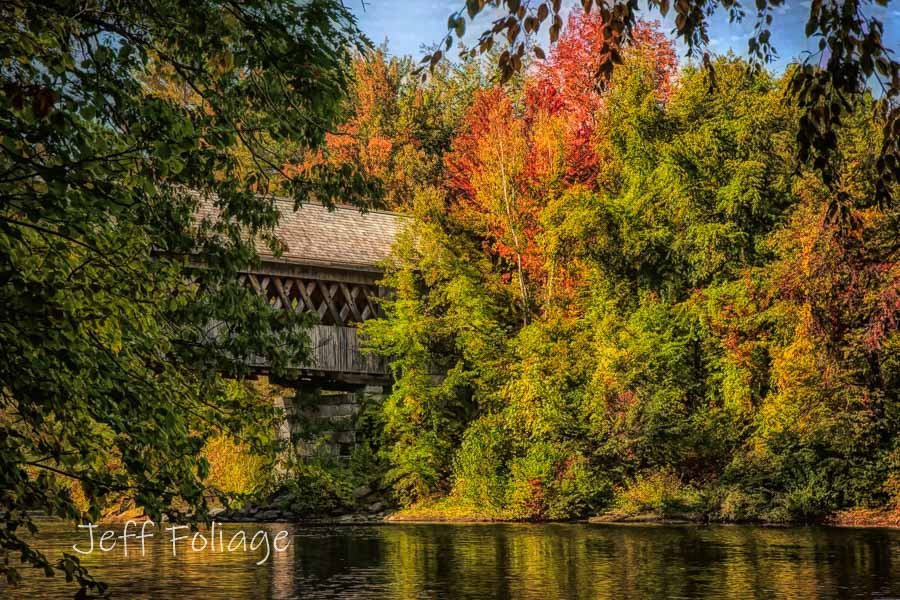



Peak Fall Foliage:
This is what we wait for all year! 75%-100% As far as the eye can see there is no green except for pine trees or trees that don’t turn color and drop their leaves.
Does this happen every year, all at the same time, all over New England? No, it does not!
Fading – color: This “post Peak color” is still pleasing where the reds and oranges pass to a less vibrant color and the trees in the distance will take on a pinkish or purplish hue. Mostly this is due to loss of leaves and the empty branches diffuse the color that was there only a day or two before.
Color-Gone! This is generally known by locals as stick season. This is where I start to cry and relax at the same time. I’m now in wind-down mode. I will now go through a few thousand pictures between now and next summer when the urge to hit the road starts all over again.
Now the best news!!!
The above seven stages continue to happen all through New England starting in Vermont’s NEK (North East Kingdom), Northern New Hampshire, and Northern Maine.
Once it starts in these areas it then starts in another area
The Ripple effect
If not, it may move, like ripples in a river as the water flows around the boulders. Now you have to use your imagination and see a pond with lots of rocks and stumps. The ripples flow around these objects that are in the way of the river and it creates eddies that leave some spots untouched (for a while and then they catch up).
This is what happens to the changing colors. The colors ebb and flow around the hills of New England. In general, the hills at higher elevations will develop first and at the same time, the wetland maples (swamp maples) will turn about the same time. The temps are critical and you may have a soft frost in one valley and a killing frost just a mile away, both events affecting the trees in different ways.
The Ebb and Flow of Fall Color Development
Here is my analogy of the process. Mother Nature has a handful of pebbles. As September arrives she picks a few of the smallest pebbles to throw onto the map of New England. Now, this map is really a pool of water, and the little slivers of rock land on the surface with very few ripples and can be considered the lowering of temps in those areas. Sometimes it’s a lot and a wide area starts moving in the direction of change, sometimes it is just a few leaves.
Now, she throws some bigger pebbles onto the map of New England. These rocks “usually” land in places like the Northeast Kingdom and other northern areas of New England like in Greenville Maine near Moosehead Lake or over near First Connecticut Lake New Hampshire a bit later and as the ripples proceed out the surrounding areas start to turn. Sometimes it’s Greenville then Stark New Hampshire, Every year it is different!
As the months of September and October progress, the ripples continue and other rocks start to drop further south, and (I hate to say this) THERE IS NO RHYME OR REASON TO THIS! That’s right, maybe an area got cooler/warmer temps and another got more/less rain. All of these things contribute to the guessing game.
But! Every day is different and brings a new area towards peak color in an undulating tapestry of fall colors.
Every year is different!
First, you must have a lot of luck, YES, luck, because I may go through an area on Wednesday and declare it at peak color, and on Thursday the temps drop into the 20s, and when you come through on Saturday all the colors have faded. Now you’re cursing me and my declaration of the “Peak”.
I won’t say this scenario will or won’t happen but Mother Nature is fickle and with every outstanding foliage scene she gives us, she is also just as quick to take it away.
Tip #2: Talk to your B&B owner or stop at the gas station and ask where they saw color on their drive to work that morning. I did that once and found out that the main road used to follow the river and it’s lined by trees… Think about the possibilities! Remember they see the color every day in their area so they are the experts to talk to.
Flexibility and zone planning
Tip #3: If possible, stay flexible. This maximizes your odds in finding peak fall color. Don’t plan to hit the bullseye of the fall colors. I would plan to be near it so if it’s early you only have to drive 30-60 miles at most. The next day you might wake up and find you are now in the middle of it…
But if you only have one weekend to go on vacation in October I would pick either, the Columbus day weekend (Indigenous Peoples Day) or the following weekend. This gives you the best chance for success. Down below I have posted some dates and locations. (*note* these are educated guesses and subject to the whims of Mother Nature)
I’ve posted some dates and locations for general planning purposes, so you can get an idea to work from. This is a guideline only and finding peak fall foliage based on these dates can be ignored if we have an early season or late, or an October rain/wind storm. (like in 2010, there were three storms, I believe?)
Dates that you can think about, generally speaking (No guarantees)
24-30 Sept: Start by heading way up North for these dates. NEK (North East Kingdom) or Northern Maine near Mount Katahdin. This one is very tough to call, and I will make a run to the NEK but seldom find peak color. It’s safer to come a week later. I have “usually” found turning color at this time in higher elevations.
1-5 Oct: This is usually a solid weekend in the NEK of Vermont, up in Lincoln/Littleton, NH, and Greenville, Maine, and points north. And sometimes, as far south as Barre, VT, Sugar Hill, NH, and central ME. (It depends on the season)
7-12 Oct: CDW (Columbus Day Weekend). There is a reason I call CDW the sweet spot for peak fall foliage viewing. This particular week will usually find the greatest latitude for great color. You should find peak fall foliage from the Green Mountains of VT (Stowe, Route 100), South to Manchester, VT. From the White Mountains (Route 112 the Kancamagus Highway) and if lucky, south to southern New Hampshire’s border. In Maine, the color could be north of I-90/95. Also in western Massachusetts the Berkshires and the Mohawk Trail at higher elevations.
15-16 Oct: Mid to Southern VT/NH/and ME, and now you can add in most of Massachusetts and northern CT, and RI for beginning color.
23 Oct into early November: The color in southern VT/NH/ME will still be pleasing, but it will be more fading fall color. The coastal areas of NH and ME should be showing good color. The color in Massachusetts will be at its peak in certain areas, but there will be many trees with their leaves on the ground. Try the Arnold Arboretum in Boston! From this point into November, the coastal cities are going to be your destinations to shoot for.
All Content was created by Jeff “Foliage” Folger. My dates and info here are based on my years of searching for fall colors in New England. Every year will be different, but they may help you come up with a reasonable expectation of finding good, if not, “Peak fall Foliage Color”.
Jeff Foliage Folger
Autumn is a state of mind more than a time of year – Jeff Foliage
- Visit my Fine Art America Gallery
- Visit my Amazon store to pick up New England-related materials
- Follow me on Bluesky
- My Facebook foliage page
- Threads.net/@Jeff_Foliage
- Follow our new Fall Foliage FB Group!
- You can visit Lisa’s Artist Facebook Page by clicking here

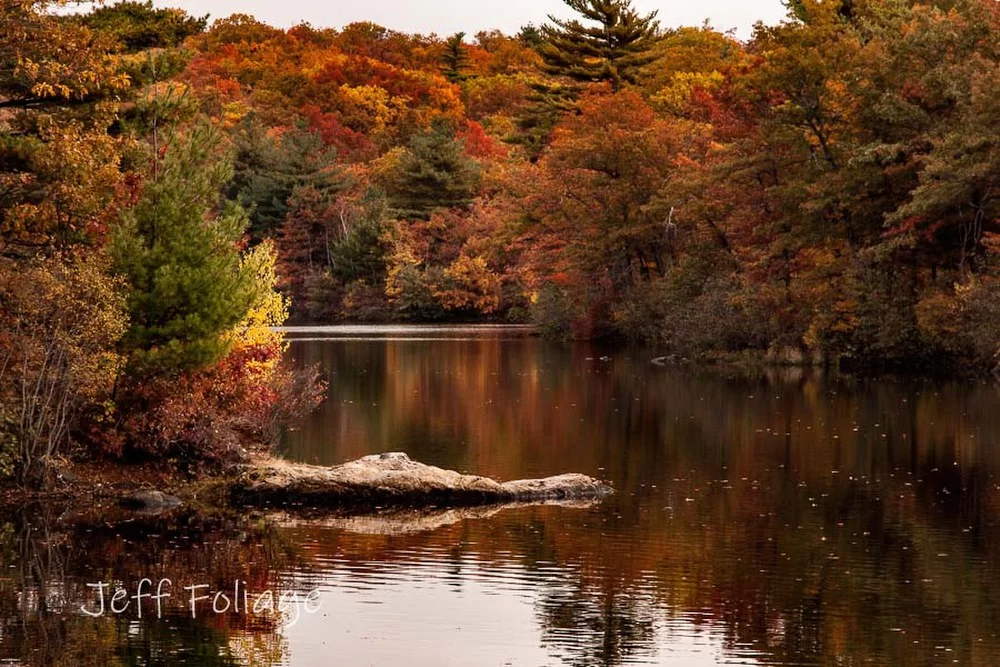
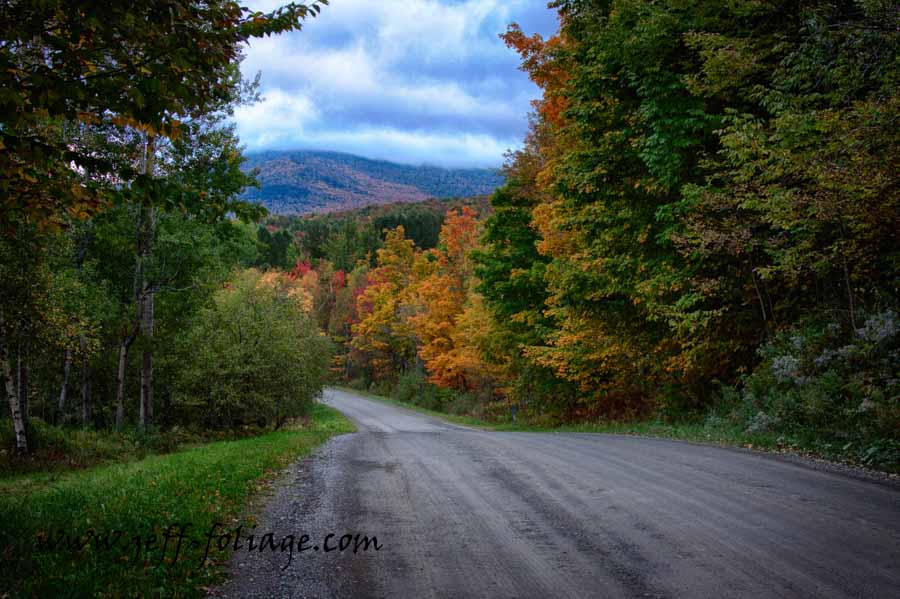
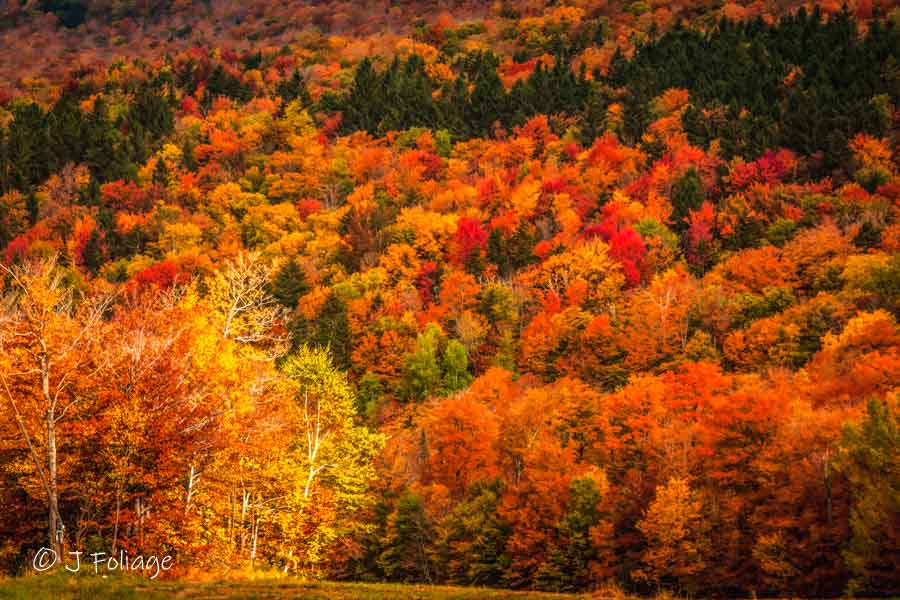
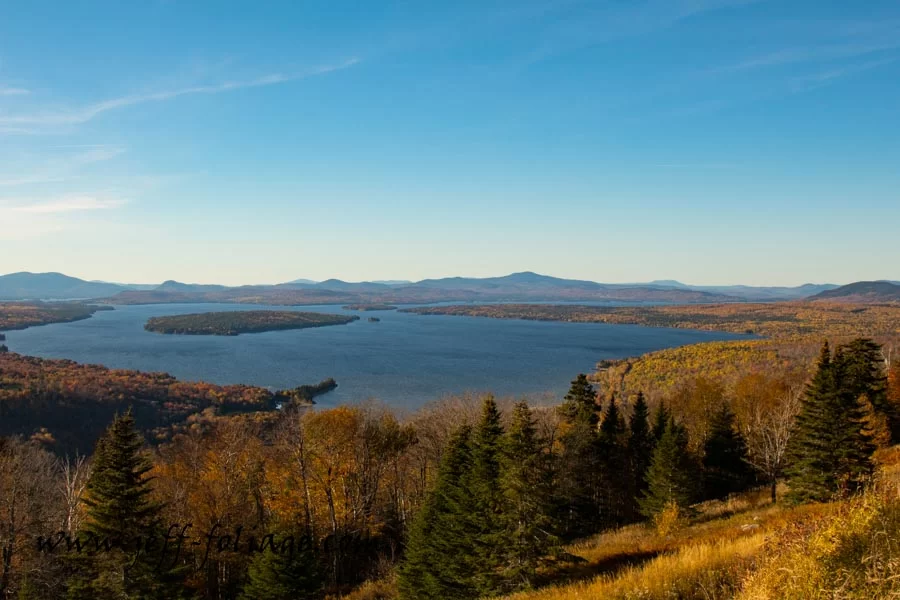

Great Site! Full of info, with the exception of what I’m looking for specifically. Are there places to camp along the way, and if so, do they fill up well in advance? We travel with our dog, who is blind. We have a small camper which allows for the dog to be in a familiar place if we leave during the day. Our plans are to find a “route” that would be great viewing and also to find accommodations along the way. We realize we will be limited but would appreciate your recommendations for a few different routes we might try. Thanks!
Great suggestion for an article… but for now it will depend on your dates. Many places close in early to mid Oct. I stayed in a nice place in 1-4 Oct near Conway NH and then in the same trip we went to a place near Woodstock Quechee VT (4-7)… But I will try to find the names this week. Lisa and I were in a 25′ fifth wheel… (I miss that and my truck… but that’s another story)… 🙂
If you’ve been camping/RVing for a while you know Woodalls which can be a good place to start and of course look at KOA’s From there I would use them to build an itinerary around the camping spots. Maybe in 25-29 Sept in northern VT then 30-3 Oct in the White mountains and then back into VT for 4-7 Oct around Woodstock VT… Something like that and then see what place are open about those times… Your dates may be different…
Great Site! Full of info, with the exception of what I’m looking for specifically. Are there places to camp along the way, and if so, do they fill up well in advance? We travel with our dog, who is blind. We have a small camper which allows for the dog to be in a familiar place if we leave during the day. Our plans are to find a “route” that would be great viewing and also to find accommodations along the way. We realize we will be limited but would appreciate your recommendations for a few different routes we might try. Thanks!
Great suggestion for an article… but for now it will depend on your dates. Many places close in early to mid Oct. I stayed in a nice place in 1-4 Oct near Conway NH and then in the same trip we went to a place near Woodstock Quechee VT (4-7)… But I will try to find the names this week. Lisa and I were in a 25′ fifth wheel… (I miss that and my truck… but that’s another story)… 🙂
If you’ve been camping/RVing for a while you know Woodalls which can be a good place to start and of course look at KOA’s From there I would use them to build an itinerary around the camping spots. Maybe in 25-29 Sept in northern VT then 30-3 Oct in the White mountains and then back into VT for 4-7 Oct around Woodstock VT… Something like that and then see what place are open about those times… Your dates may be different…
Fantastic Article
Fantastic Article
Great article. I love that you go into detail about everything, and have such passion or what you do. As an fall enthusiast, I’m pushing to relocate permanently to the New England area so I can actually experience Autumn on a yearly basis instead of having to travel sporadically to admire it. I have a question for you; I’ve been checking rather religiously this week on the peak times up in the Adirondack area and it seems the trees are expecting a 75% color change this coming weekend ( Sept 28-1st). I am traveling up to Albany the following weekend ( Oct 3-7), and I was wondering if I would still be able to enjoy the colors up in the mountains. I guess my main question to you is, how long does “peak” typically last. In simpler terms, how long do turning leaves keep their color before they turn brown and fall off?
Thanks for your knowledge in advance!
Without rain or wind and happy leaves… they can stick around for days or weeks..
Great article. I love that you go into detail about everything, and have such passion or what you do. As an fall enthusiast, I’m pushing to relocate permanently to the New England area so I can actually experience Autumn on a yearly basis instead of having to travel sporadically to admire it. I have a question for you; I’ve been checking rather religiously this week on the peak times up in the Adirondack area and it seems the trees are expecting a 75% color change this coming weekend ( Sept 28-1st). I am traveling up to Albany the following weekend ( Oct 3-7), and I was wondering if I would still be able to enjoy the colors up in the mountains. I guess my main question to you is, how long does “peak” typically last. In simpler terms, how long do turning leaves keep their color before they turn brown and fall off?
Thanks for your knowledge in advance!
Without rain or wind and happy leaves… they can stick around for days or weeks..
Hi, great blog, super helpful. How does this sound for Oct 1st week for travels from San Diego?
| 1–2 | Boston | Freedom Trail, Boston Common, Museums |
| 3 | Lincoln | Hobo Railroad, Flume Gorge, Cannon Mountain |
| 4–5 | Lake Winnipesaukee Area | Winnipesaukee Scenic Railroad, Kancamagus Highway |
| 5 | Mount Washington & Stowe | Cog Railway, Smugglers’ Notch, Stowe Village |
| 6–7 | Adirondacks & Upstate New York | High Falls Gorge, Storm King Art Center |
| 8–9 | Upstate New York | Utica |
| 9 | Lake Placid & Hudson Valley | High Falls Gorge, Storm King Art Center |
| 10–11 | New Jersey | Day with Friends |
| 12 | New York City | Fly Back to San Diego |
Are we trying to do too much? Any suggestions on additions or substractions would be greatly appreciated. Thank you!
Hmmm, If you are walking, you will be late but jokes aside, right now the drought is almost gone and if we stay somewhat balanced in the temps and rain dept, then it looks Wonderful…
Check back in November and I will know for a fact how the fall colors will look like in October… 🙂